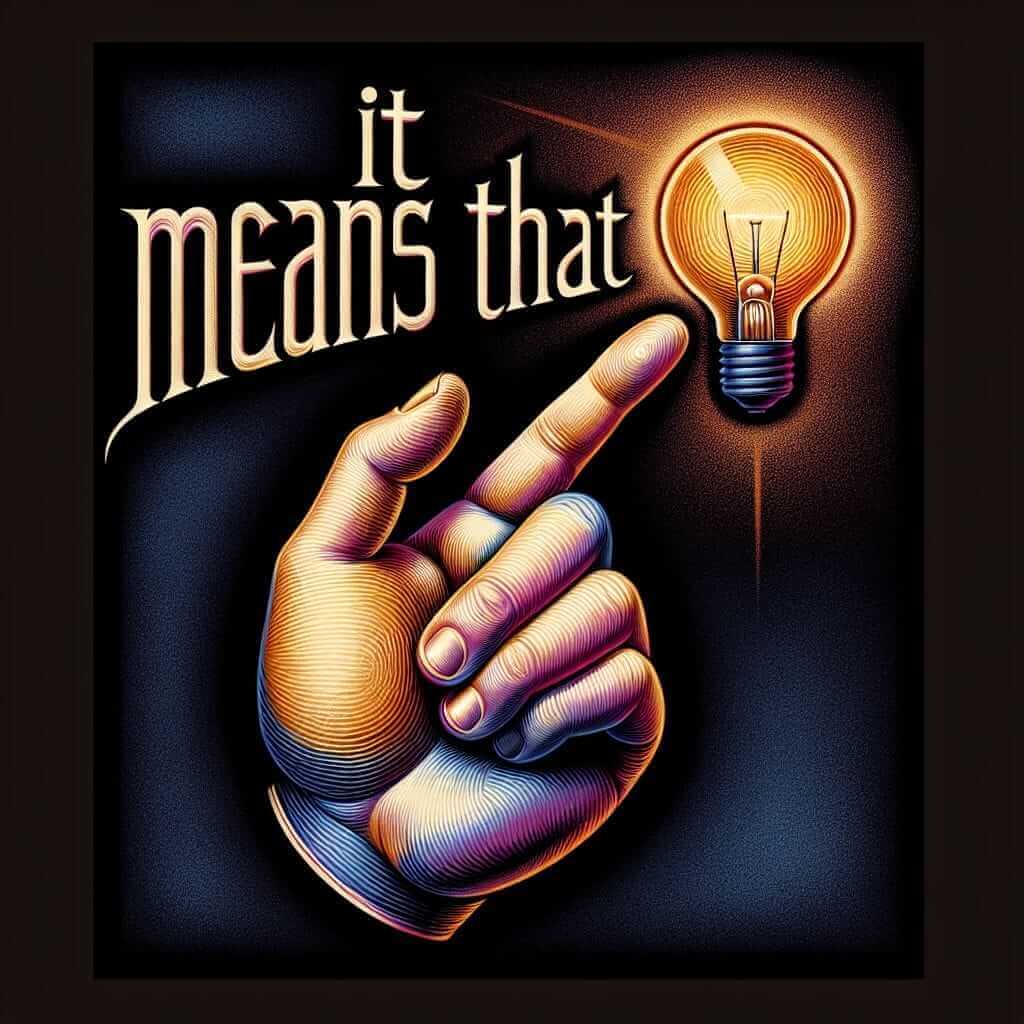The phrase “it means that” is a common yet powerful tool in the English language, frequently appearing in both written and spoken contexts. For IELTS aspirants, understanding its nuances and applications can be crucial for achieving a higher band score, particularly in the Writing and Speaking sections. This article will delve into the meaning, usage, and variations of “it means that,” providing clear examples and analysis to equip you with the knowledge to wield this phrase effectively in your IELTS exam.
Let’s consider these examples which demonstrate how “it means that” can be integrated into different sections of the IELTS exam:
Speaking Part 3:
Examiner: “What impact does technology have on learning?”
You: “Technology has revolutionized learning. It means that students now have access to a vast amount of information at their fingertips and can learn at their own pace.” (Here, “it means that” explains the consequence of technology on learning)
Writing Task 2:
“Some believe that globalization leads to cultural homogenization. Discuss.”
Your essay: “While globalization encourages the exchange of ideas and products, it does not necessarily mean that unique cultural identities will disappear.” (In this context, “it does not necessarily mean that” refutes a common belief)
Listening Section:
You might hear a speaker say: “The new traffic regulations are designed to reduce congestion. This means that commuters should experience faster travel times during peak hours.” (The phrase clarifies the impact of the new regulations)
These examples show how “it means that” acts as a bridge, connecting an idea or situation to its consequence, explanation, or implication.
Understanding “It Means That”
At its core, “it means that” functions as a cohesive device, signaling to the listener or reader that you are about to explain or interpret something previously mentioned. “It” refers back to the preceding statement, while “means that” introduces the explanation or consequence. This structure aids in clarity and logical flow within your sentences and paragraphs.
Using “It Means That” Effectively
Formula and Grammatical Structure:
It + Verb (usually “means,” but can be other verbs like “implies,” “suggests,” “indicates”) + That + Clause
Breakdown:
- It: This pronoun acts as a placeholder, referring back to a previously mentioned idea, situation, or event.
- Verb: The verb (most commonly “means”) establishes the relationship between the previous statement and the explanation that follows.
- That: This conjunction introduces the clause containing the explanation or consequence.
- Clause: This part provides the interpretation, result, or implication of the preceding information.
Application in Different IELTS Sections:
- Writing (Task 1 & 2): Use “it means that” to elaborate on trends in graphs or charts (Task 1) or to explain the implications of your arguments in essays (Task 2).
- Example (Task 2): “The increasing reliance on automation in the workplace means that job security in many traditional sectors is at risk.”
- Speaking (Part 3): Employ this phrase to clarify your opinions or to explain the effects of a particular trend or issue.
- Example: “The rise of social media has made it easier than ever to stay connected. However, it also means that people are more susceptible to online scams and misinformation.”
- Listening: Be prepared to identify and understand the meaning of “it means that” when it is used in spoken passages.

Reaching Higher Bands: Variations and Alternatives
To showcase a wider range of vocabulary and grammatical structures, consider these alternatives to “it means that”:
- This implies that…
- It follows that…
- Consequently…
- As a result…
- Therefore…
Using these variations demonstrates a more sophisticated command of English, which can contribute to achieving a higher band score.
Example:
- Original: “The company’s profits have declined. It means that they need to rethink their marketing strategy.”
- Improved: “The company’s declining profits imply a need to rethink their marketing strategy.” (This version replaces “it means that” with a more concise and formal structure)
Common Mistakes to Avoid:
- Redundancy: Avoid using “it means that” excessively, especially when a simpler connecting word like “so” or “therefore” would suffice.
- Incorrect pronoun reference: Ensure that “it” clearly refers back to the intended idea to prevent ambiguity.
- Informal usage: While acceptable in casual conversation, stick to more formal alternatives like “this suggests” or “consequently” in your written responses.
Conclusion:
“It means that” is a valuable phrase to have in your IELTS vocabulary arsenal. By understanding its correct usage, employing variations, and avoiding common errors, you can express your ideas with greater clarity and precision. Remember to practice incorporating “it means that” and its alternatives into your writing and speaking practice to boost your confidence for the IELTS exam.